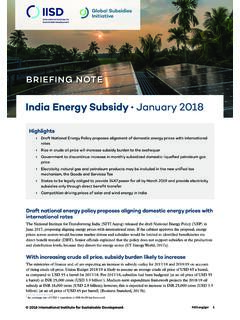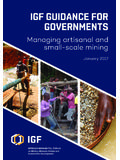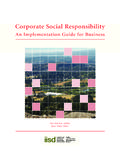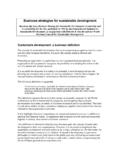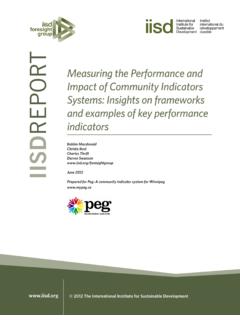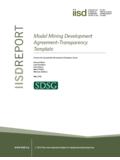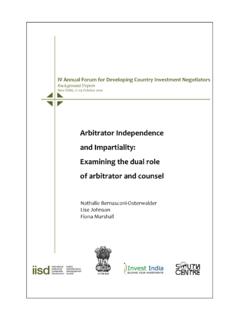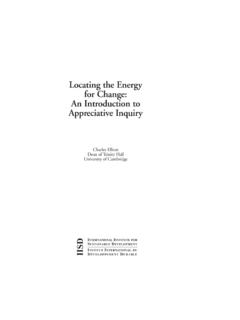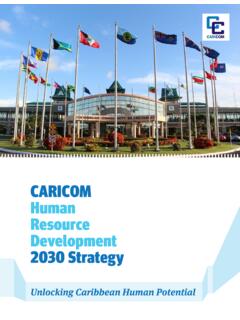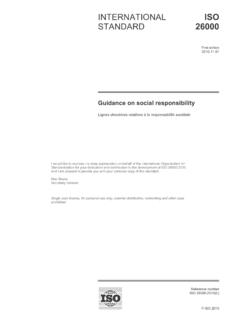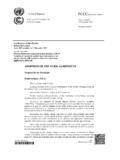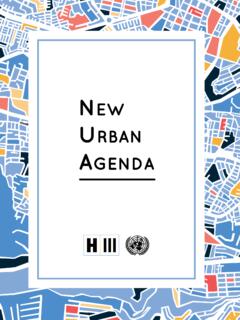Transcription of GLOBAL TRENDS IN ARTISANAL AND SMALL-SCALE MINING …
1 2014 The International Institute for Sustainable DevelopmentGLOBAL TRENDS IN ARTISANAL AND SMALL-SCALE MINING (ASM):A REVIEW OF KEY NUMBERS AND ISSUESS ecretariat hosted bySecretariat funded by 2017 The International Institute for Sustainable DevelopmentPublished by the International Institute for Sustainable DevelopmentGlobal TRENDS in ARTISANAL and SMALL-SCALE MINING (ASM): A review of key numbers and issuesReport prepared by the International Institute for Environment and Development (IIED) for the Intergovernmental Forum on MINING , Minerals and Sustainable Development (IGF)January 2018 Written by Morgane Fritz, James McQuilken, Nina Collins and Fitsum WeldegiorgisRecommended citation:Intergovernmental Forum on MINING , Minerals, Metals and Sustainable Development (IGF).
2 (2017). GLOBAL TRENDS in ARTISANAL and SMALL-SCALE MINING (ASM): A review of key numbers and issues. Winnipeg: IISD. 2018 The International Institute for Sustainable DevelopmentPublished by the International Institute for Sustainable DevelopmentThe International Institute for Sustainable Development (IISD) is one of the world s leading centres of research and innovation. The Institute provides practical solutions to the growing challenges and opportunities of integrating environmental and social priorities with economic development. We report on international negotiations and share knowledge gained through collaborative projects, resulting in more rigorous research, stronger GLOBAL networks, and better engagement among researchers, citizens, businesses and is registered as a charitable organization in Canada and has 501(c) (3) status in the United States.
3 IISD receives core operating support from the Government of Canada, provided through the International Development Research Centre (IDRC) and from the Province of Manitoba. The Institute receives project funding from numerous governments inside and outside Canada, United Nations agencies, foundations, the private sector and IGF supports more than 60 nations committed to leveraging MINING for sustainable development to ensure that negative impacts are limited and financial benefits are is devoted to optimizing the benefits of MINING to achieve poverty reduction, inclusive growth.
4 Social development and environmental IGF is focused on improving resource governance and decision making by governments working in the sector. It provides a number of services to members including: in-country assessments; capacity building and individualized technical assistance; guidance documents and conference which explore best practices and provide an opportunity to engage with industry and civil International Institute for Sustainable Development was appointed to a five-year term as Secretariat for the IGF in October 2015. Funding is provided by the Government of is a policy and action research organisation.
5 We promote sustainable development to improve livelihoods and protect the environments on which these livelihoods are built. We specialise in linking local priorities to GLOBAL challenges. IIED is based in London and works in Africa, Asia, Latin America, the Middle East and the Pacific, with some of the world s most vulnerable people. We work with them to strengthen their voice in the decision-making arenas that affect them from village councils to international Head Office111 Lombard Avenue Suite 325 Winnipeg, Manitoba Canada R3B 0T4 @IISD_newsIGF / IISD Ottawa office1100-220 Laurier Ave.
6 W. Ottawa, Ontario Canada R3B 0T4 @IGFM iningIIED office80-86 Gray's Inn Road London, UK WC1X @IIED 2014 The International Institute for Sustainable DevelopmentivSUMMARYA rtisanal and SMALL-SCALE MINING (ASM) has experienced explosive growth in recent years due to the rising value of mineral prices and the increasing difficulty of earning a living from agriculture and other rural activities. An estimated million people were directly engaged in ASM in 2017, up from 30 million in 2014, 13 million in 1999 and 6 million in 1993. That compares with only 7 million people working in industrial MINING in is generally pursued as a route out of poverty or as an activity to complement insufficient income, especially in communities where alternative employment is hard to come by.
7 ASM is also a very diverse sector. Its main challenges vary from region to region and often from site to site. There is a perception that ASM is a get-rich-quick activity. This has misinformed legislation and extension programs and led to the application of one-size-fits-all policies. However, people working in ASM are far from the same. They range from those whose livelihoods rely on subsistence farming to skilled workers who migrated from urban areas in search of its low productivity, ASM is an important source of minerals and metals. It accounts for about 20 per cent of the GLOBAL gold supply, 80 per cent of the GLOBAL sapphire supply and 20 per cent of the GLOBAL diamond supply.
8 ASM is also a major producer of minerals indispensable for manufacturing popular electronic products, such as laptops and phones. For example, 26 per cent of GLOBAL tantalum production and 25 per cent of tin comes from ASM. ENVIRONMENT AND HEALTH AND SAFETYASM relies on a mostly unskilled workforce using rudimentary tools and techniques. Unsurprisingly, its environmental and health and safety practices tend to be very poor. For example, dust and fine particles resulting from blasting and drilling cause respiratory illnesses. It also degrades crops and farmlands, resulting in lost food production.
9 Streams and rivers often become polluted near ASM sites, which makes water unsafe for drinking and can also affect fish stocks previously relied upon for and SMALL-SCALE MINING is also the source of the largest releases of mercury, estimated at 1,400 tonnes per year in 2011 according to the Minamata to mercury can have serious health impacts, including irreversible brain damage. Mercury is also difficult to contain and can be toxic at even very small doses. It can be transported long distances by air or water, poisoning the soil and waterways, and eventually making its way into the food chain.
10 In sub-Saharan Africa, most of these risks are borne by AND LARGE-SCALE MINING (LSM) In many parts of the world, ASM and LSM operate in neighbouring and sometimes on the same concessions. As mineral governance frameworks tend to favour foreign direct investment by multinational companies over ASM, there are significant power imbalances and clashes over claims. However, their coexistence opens the potential for cooperation. Current practices and debates about ASM LSM relations include: Removing ASM from LSM concessions, which is unlikely to solve clashes over land in the long run Separating ASM and LSM by creating ASM zones, with proven geological reserves Fostering cooperation between LSM and ASM operators through buy-back arrangements, technical assistance and support for formalization Promoting continued dialogue and communication between ASM and LSM.
